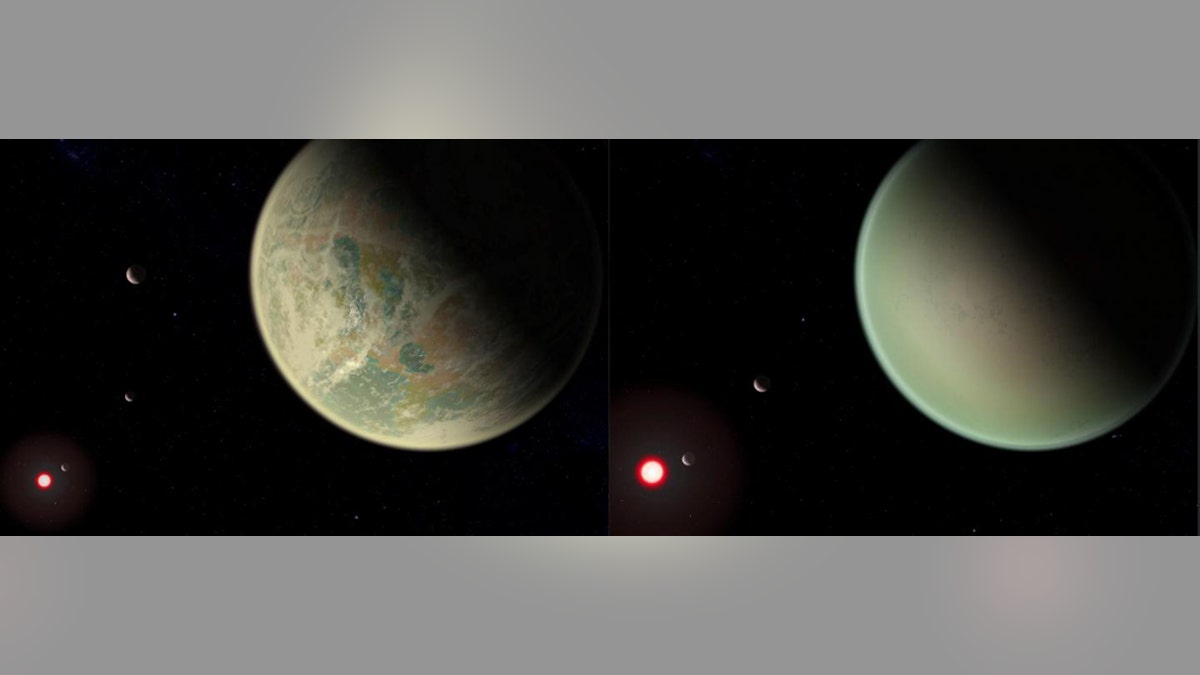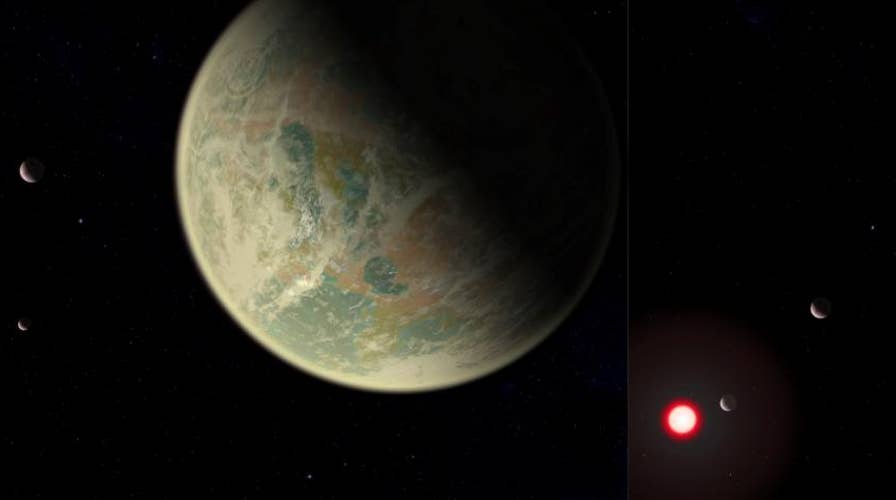Fox News Flash top headlines for Feb. 20
Fox News Flash top headlines are here. Check out what's clicking on Foxnews.com.
Astronomers have announced a significant discovery: they have found molecular oxygen for the first time ever outside the Solar System.
In a research published in The Astrophysical Journal, they noted that it was discovered in the Markarian 231 galaxy, 561 million light-years from Earth. A light-year, which measures distance in space, equals about 6 trillion miles.
"This first detection of extragalactic molecular oxygen provides an ideal tool to study AGN-driven molecular outflows on dynamic timescales of tens of megayears," the researchers wrote in the study's abstract.

Conceptual image of water-bearing (left) and dry (right) exoplanets with oxygen-rich atmospheres. (NASA/GSFC/Friedlander-Griswold)
NASA DETECTS MYSTERIOUS OXYGEN CHANGES ON MARS IT'S 'STRUGGLING TO EXPLAIN'
The find is significant since the galaxy is powered by a quasar, a highly active supermassive black hole. Some astronomers believe there are two quasars at the center of the galaxy. though that has yet to be proven. Quasars are considered the brightest objects in the universe and the quasar at the center of Markarian 231 is the closest one to Earth.
The researchers used the IRAM 30-meter radio telescope in Spain to make their observations after looking at it for four days. It's unclear what is causing the oxygen to appear, but it may be due to "the interaction between the active galactic nucleus-driven molecular outflow and the outer disc molecular clouds," the researchers wrote in the study.
Oxygen is necessary for life as we know it, according to the University Corporation for Atmospheric Research, but so far, molecular oxygen has been difficult to find. It has been detected in the Orion nebula, but since it experiences intense radiation from the young stars being formed, it's possible the water ice is split into a molecular level, allowing for the discovery of oxygen.
MYSTERIOUS SIGNAL FROM DEEP SPACE IS REPEATING IN 16-DAY CYCLE
Oxigen is the third most abundant element in the universe, trailing hydrogen and helium. Some scientists believe oxygen in space is stuck with hydrogen in the form of water ice, which could be why it is hard to detect.
In November, NASA's Curiosity rover discovered that oxygen "behaves in a way that so far scientists cannot explain" on Mars.
The Curiosity rover, which has been exploring the Gale Crater since it landed on Mars in August 2012, found that the oxygen in the atmosphere did not behave in the same way that nitrogen and argon did, following "a predictable season pattern, waxing and waning in concentration in Gale Crater throughout the year relative to how much CO2 is in the air."
Instead, the amount of oxygen in the air throughout the spring and summer rose by as much as 30 percent, then dropped to levels that were predicted by known chemistry in the fall.

